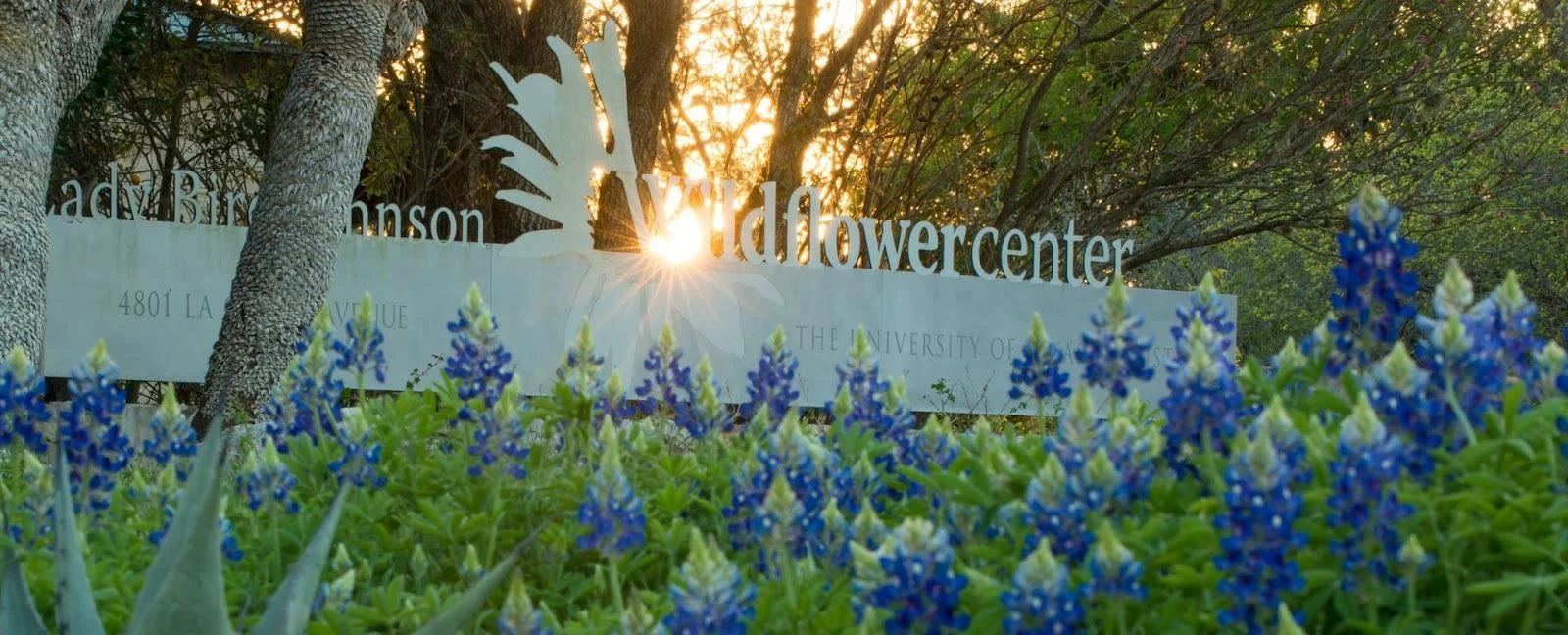Since 1982 The Lady Bird Johnson Wildflower Center in Austin, Texas has been a pioneering organization at the forefront of native plant conservation. This may come as no surprise, given the spirit and foresight of its founder, former First Lady Lady Bird Johnson, who was known to many as “The Environmental First Lady.”
However, it has been the subsequent generations of enthusiasts, citizens and scientists who have found kinship with her vision of beautification with—and the conservation of—native plants that have continued to sustain The Wildflower Center’s legacy.
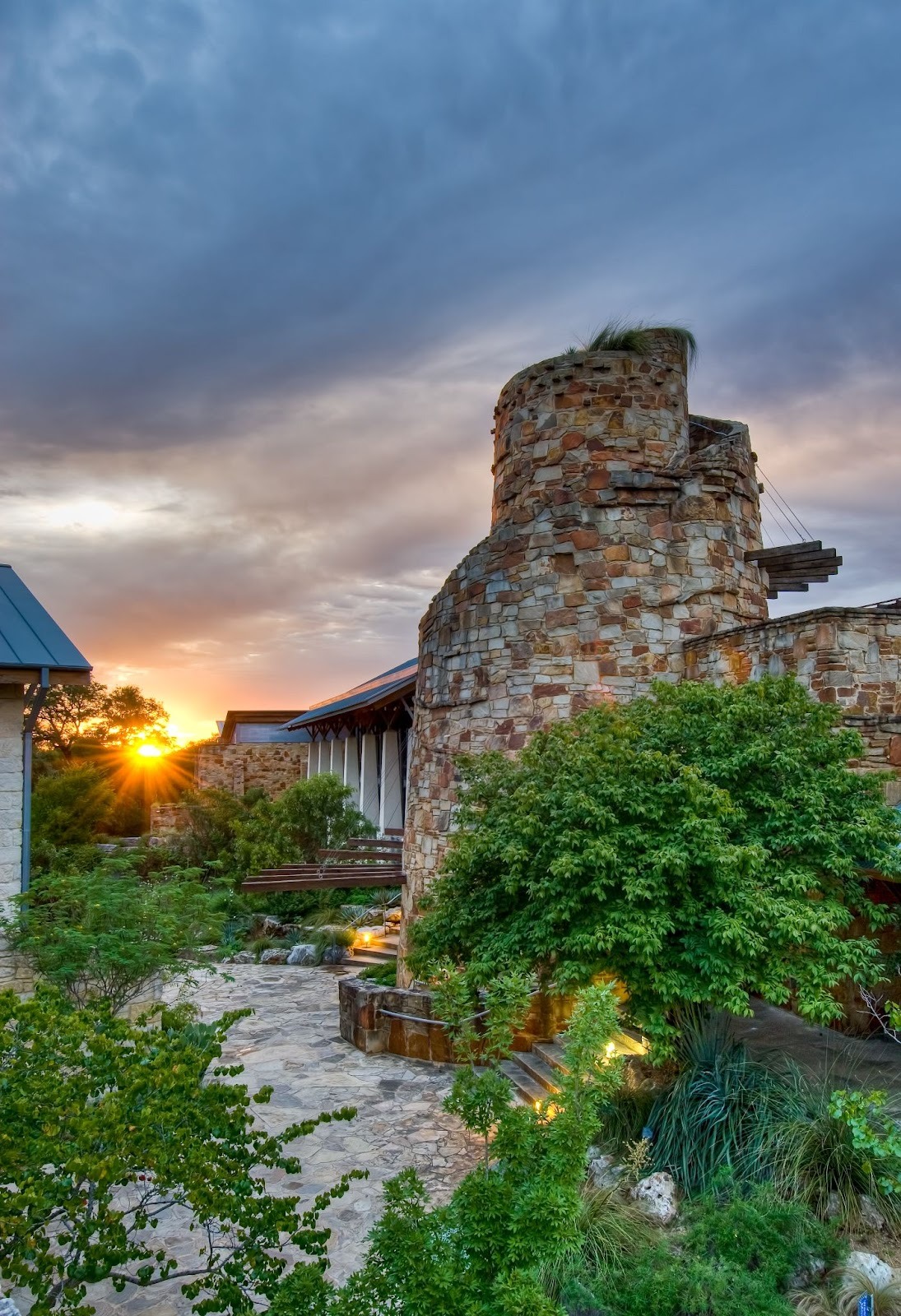
Sunset behind the observation tower. (Photo: Courtesy of The Wildflower Center)
It is this sense of alignment that has driven initiatives like a 25 year study on the impacts of controlled burning on Texas landscapes, the establishment of a living seed bank for rare and endangered native plants, ever-evolving efforts to invite community members to engage with The Wildflower Center’s scientific endeavors, as well as efforts to bring conservationists and researchers across Texas together to share information and learn from one another.
While these endeavors are just a fraction of what keeps The Wildflower Center buzzing like the happy pollinators that are sighted there, they are certainly enough to keep the Science and Conservation Team busy.
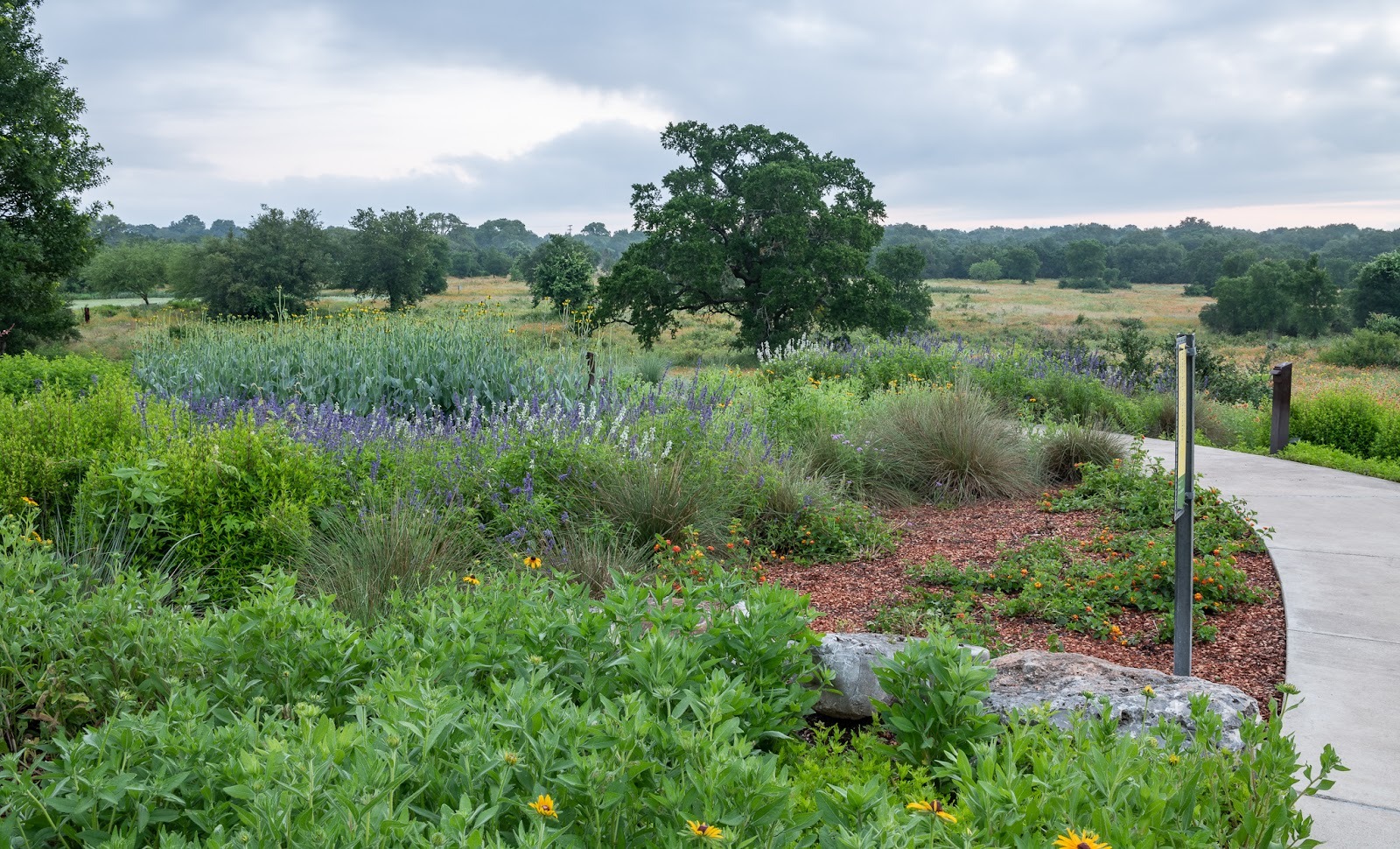
Nectar Garden path. (Photo: Courtesy of The Wildflower Center)
Burning for Biodiversity
While The Center’s homebase is in Austin, its research and conservation initiatives are state wide.
Dr. Sean Griffin, who specializes in large-scale habitat restoration and is The Wildflower Center’s current Director of Science and Conservation, has been encouraged by his work throughout the state.
“There's so much potential across Texas, just because there is so much land, and beyond that, there's so much connection between the people and the land. A lot of these ranch owners really do truly care about their land, a huge amount,” Griffin said.
“So often, we get a lot more interest and adoption of restoration and sustainable land management [practices] than I think I would expect, just because people take a lot of pride in what they have, in the rare species and the beauty of their land.”
An important tool in habitat restoration, and a special area of interest to both Griffin and The Wildflower Center, is fire ecology.
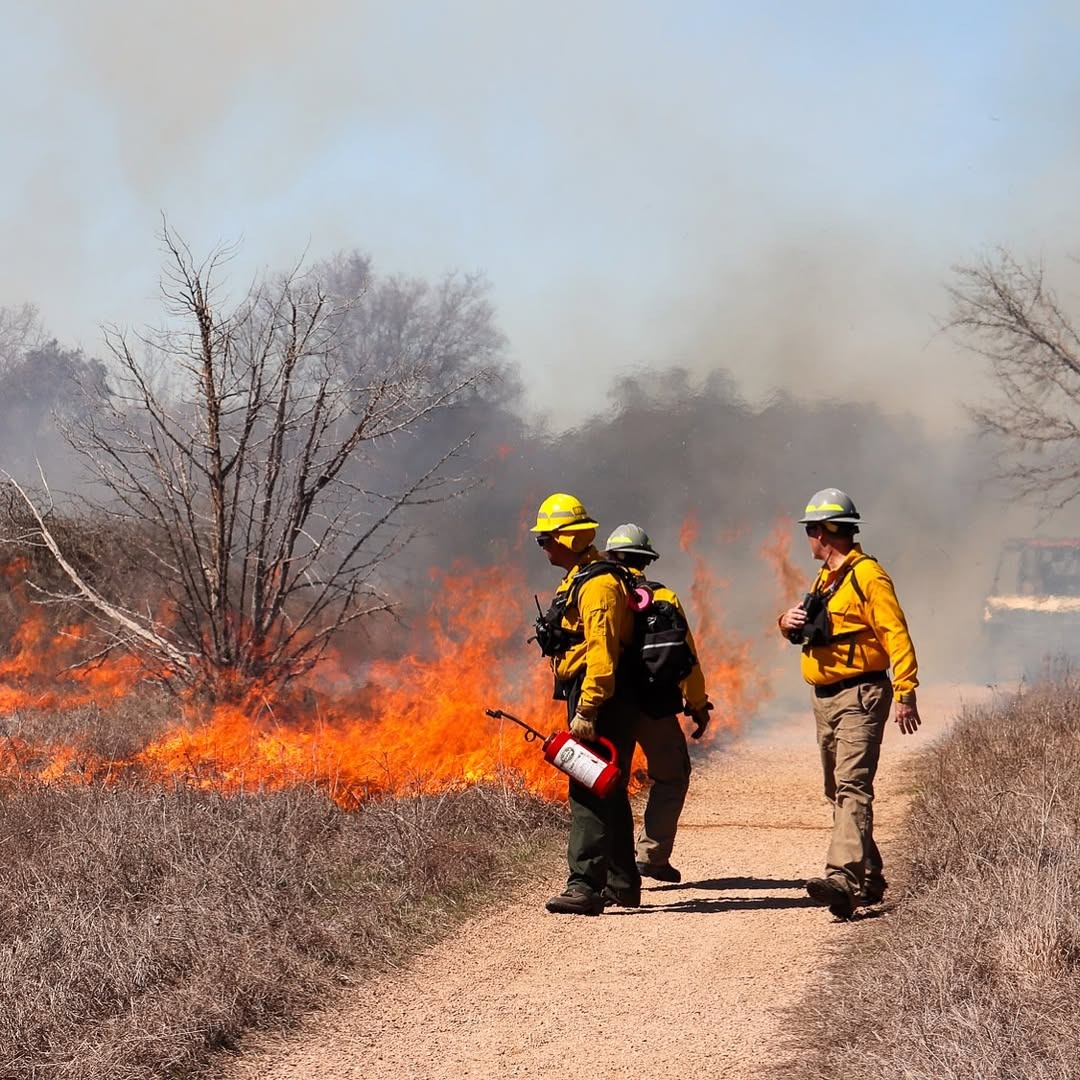
A prescribed burn on The Center’s campus. (Photo: The Wildflower Center Instagram)
The Center has been experimenting with prescribed burning on a 75-acre section of its own campus for the past 25 years. This ongoing research has amassed a huge data set that is now being used to study plant responses to climate change and extreme weather events, among other things.
“We've actually been able to now look at how different plant species are responding to drought and how that interacts with management, which has been really fascinating because we see that certain plant groups do much better under warmer conditions than others, and that can actually change the effects of the fire as well as fire behavior,” Griffin said.
Historically, much of the state would have naturally been subjected to periodic burning. While fire suppression is a relatively recent phenomenon, restoration professionals have been bringing it back to the land to increase biodiversity.
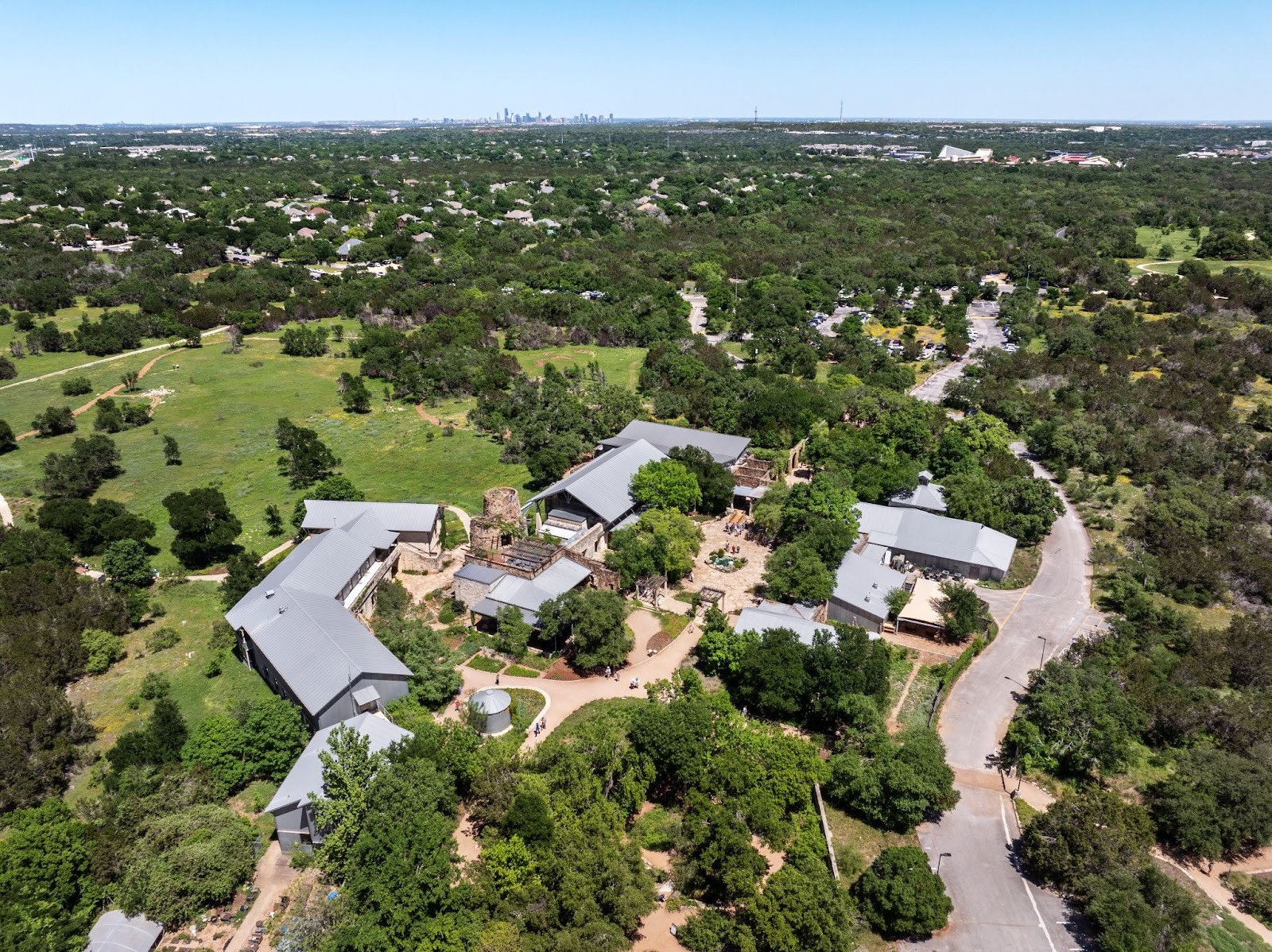
Aerial view of The Wildflower Center. (Photo: Courtesy of The Wildflower Center)
Prescribed burns, if executed correctly, can help to eliminate invasive species. This action, combined with reseeding the area with native plant seeds, has yielded incredibly positive results in not only returning the landscape to its natural state but also in supporting the pollinator populations that need these plants to thrive.
For the past several decades, conducting controlled burns in the winter months had been favored due to ease of fire management. However, years of experimentation have led fire ecologists to the conclusion that burning in the summer, which mimics natural fire cycles in the area, encourages greater success in habitat restoration.
A recent large-scale project that The Wildflower Center was a part of brought together an array of diverse stakeholders, from state and national organizations to private landowners, to burn and reseed swaths of land from Austin through southern Oklahoma.
“We wanted to do that restoration work to understand how our restoration methods are working year to year, over a long time frame and also across large spatial scales, and especially [understand] the effects of restoration on pollinators,” Griffin said of the initiative.
While scientists don’t yet fully know how it’s being achieved, they have found that pollinators, especially more common species of native bees, are able to recolonize a restored habitat relatively quickly. However, more novel species continue to show up over time–even a decade or more after the initial restoration.
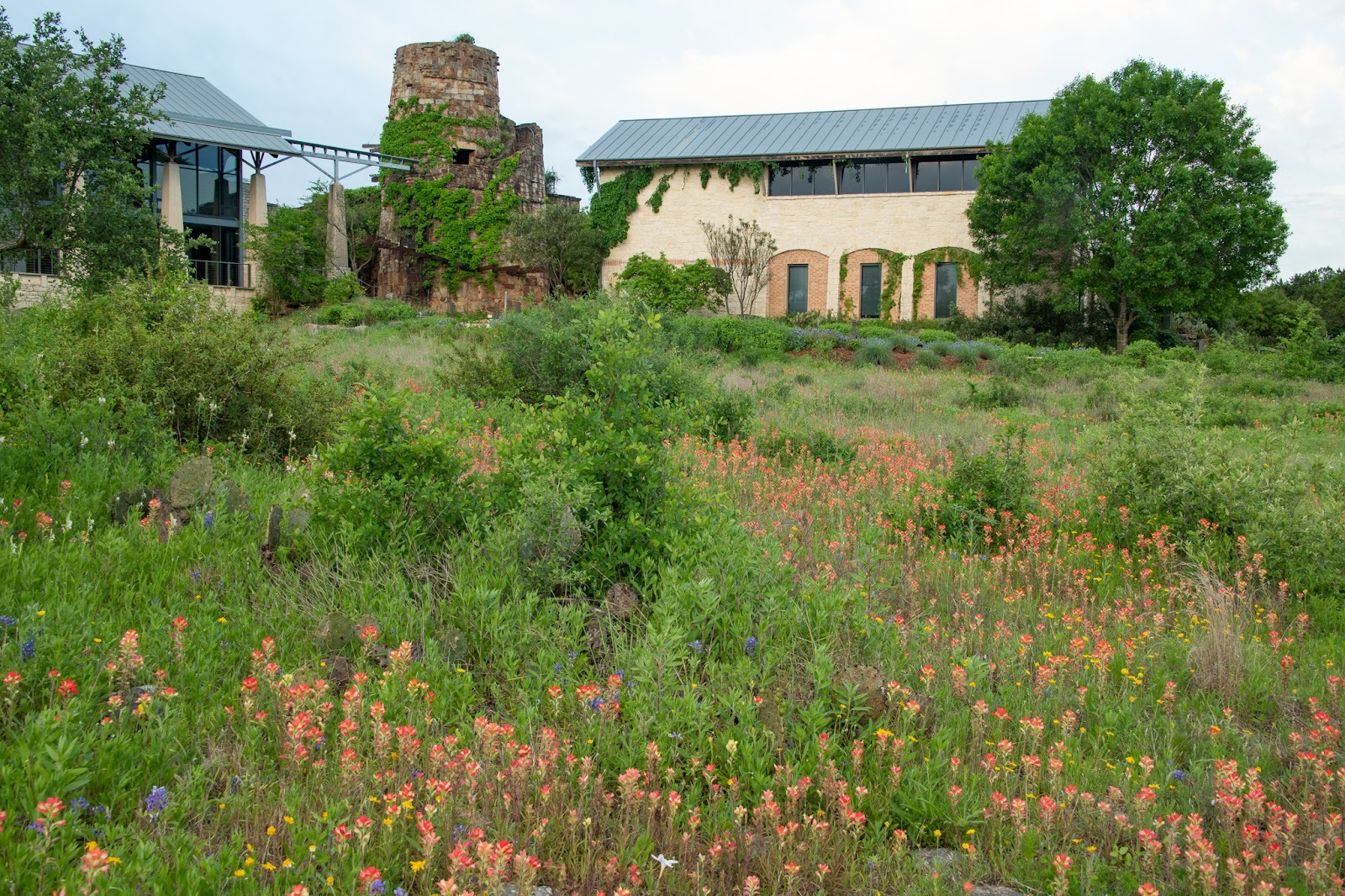
Paintbrush Meadow. (Photo: Courtesy of The Wildflower Center)
Preserving Populations in Peril
In addition to their efforts to restore native plant populations across Texas, Dr. Griffin and his team are diligently working to preserve the population at large and safeguard species that are at risk.
One way they’re doing this is by stewarding one of the largest conservation collections of Texas native plants, through their seed bank.
The seed bank is a living collection. This means that periodic germination trials are done on the seeds to ensure viability, and that new seeds are continuously collected and added to the bank. Additionally, seeds are regularly sent out upon request to organizations and individuals for research purposes.
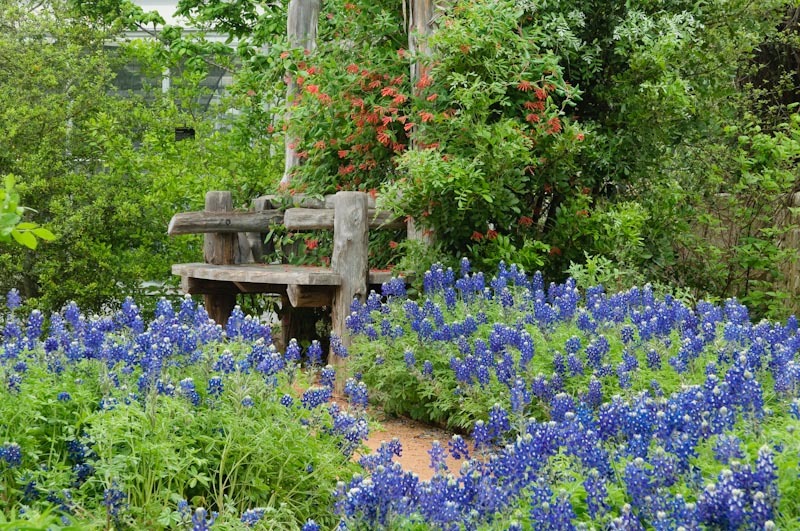
Trail bench. (Photo: Courtesy of The Wildflower Center)
The seed bank is an invaluable resource and serves as a safety net for at-risk plant populations in the face of catastrophic events.
July of 2025 brought such an event to central Texas, with flash flooding along the Guadalupe River.
Concern arose for a critically at-risk plant population, with only 600 known members in the wild, that stands along the banks of the river. However, the seeds in the seedbank provided a hedge against the possibility of species loss.
“We were worried that the flooding could’ve wiped out that entire population, but we had that population in the seed bank…so we would have that source for reintroduction to the wild. But, the real idea behind the seed bank is just an insurance policy for the future,” Griffin said.
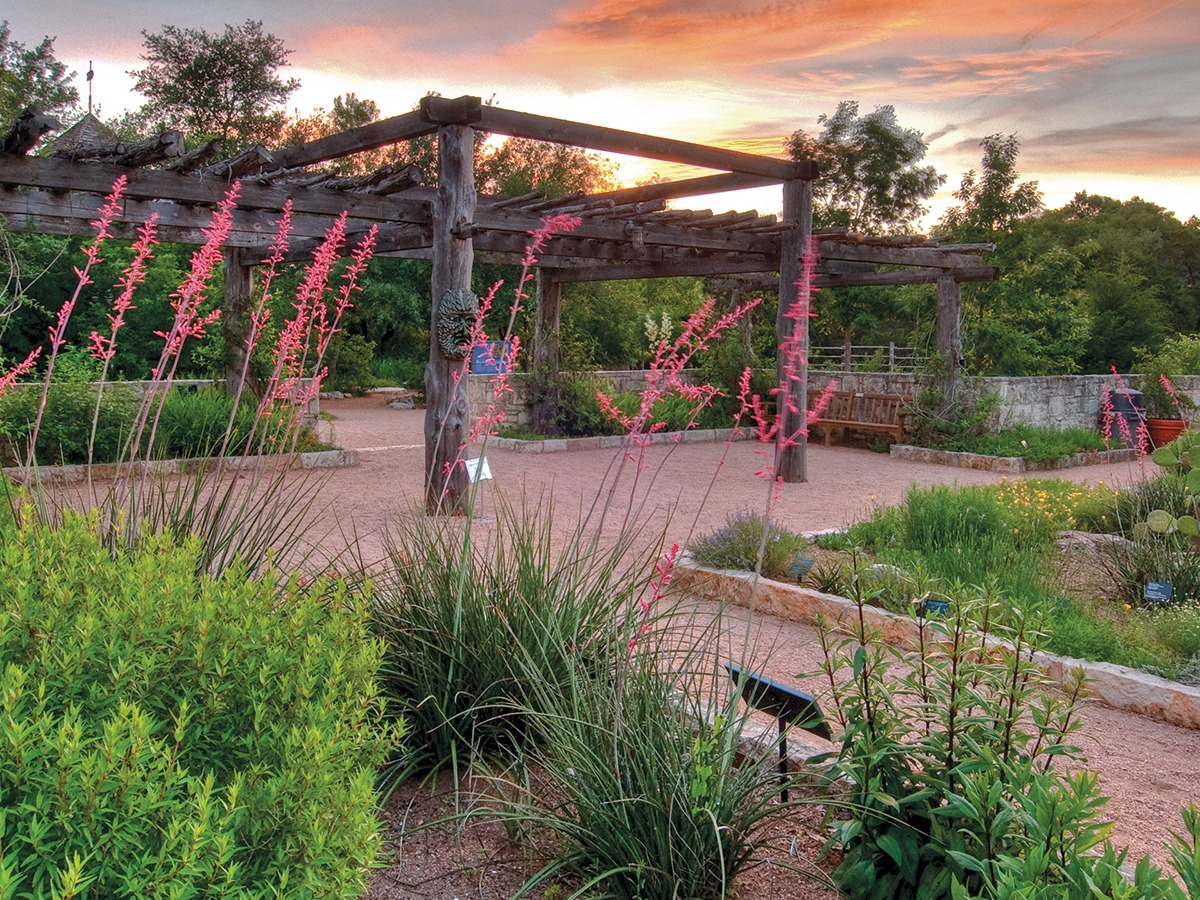
The Wildflower Center campus. (Photo: Courtesy of The Wildflower Center)
A rich resource for the rare plants that Dr. Griffin and his team are working to preserve and protect, are Texas state parks. Many of the parks encompass large tracts of land, often in remote locations, thus shielding their ecosystems from some of the pressures that can be associated with high traffic areas.
“We have some really incredible parks in Texas. I always feel like some of the state parks here could be national parks in other places,” Griffin said.
“One of the areas that we've been working recently is in Big Bend Ranch State Park, which is next to Big Bend National Park. It's just an enormous property…and it has a lot of really interesting and rare plants, including the country's only oak species listed on the Endangered Species Act
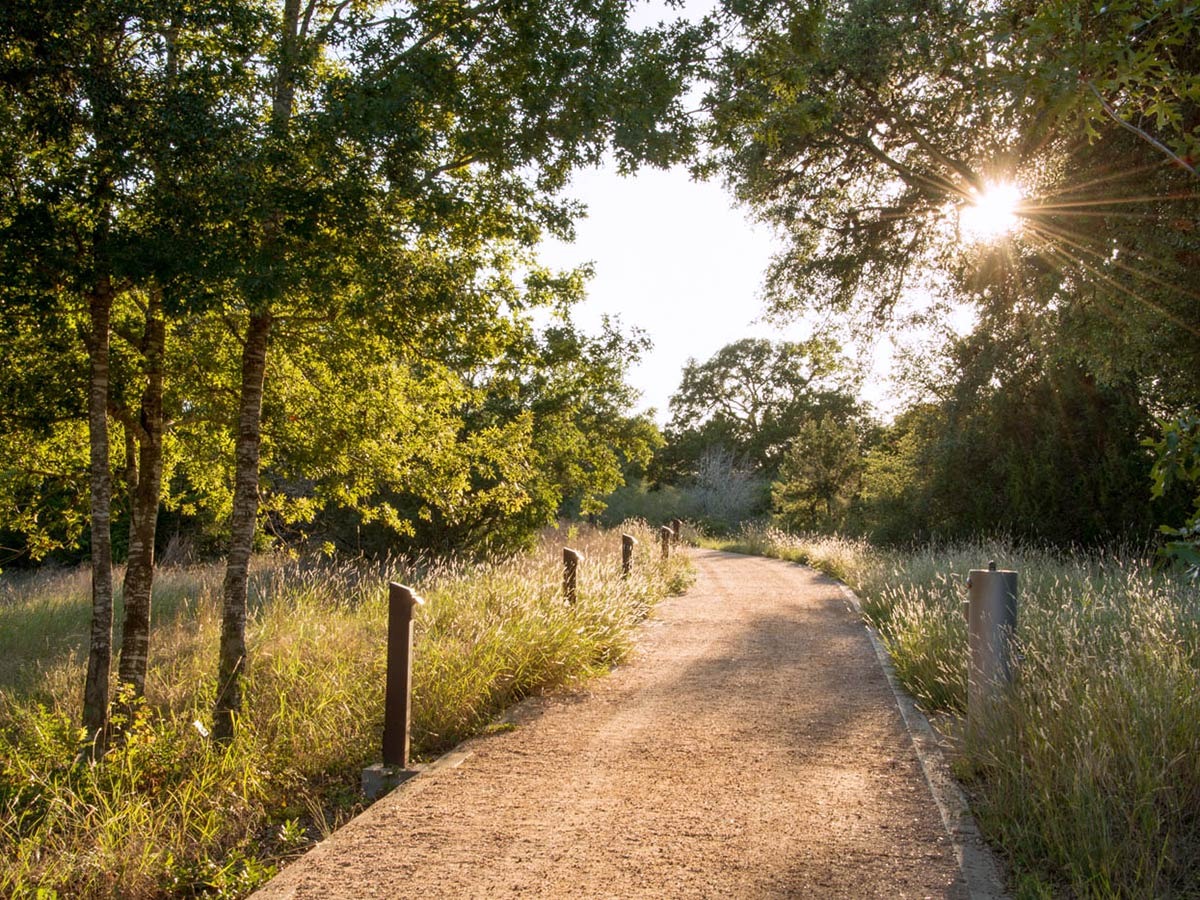
Arboretum trail. (Photo: Courtesy of The Wildflower Center)
Cultivating Connection
While community engagement has long been a pillar of The Lady Bird Johnson Wildflower Center, there are new opportunities on the horizon for the community to connect with the science of The Center.
Studies are currently underway on how to improve the accessibility of Botanical Garden spaces for researchers, and members of the public, with disabilities.
Additionally, a website redesign is slated to launch in the Spring of 2026. With it, will come improvements to their already impressive North American Native Plant Database, which serves 11 million users annually.
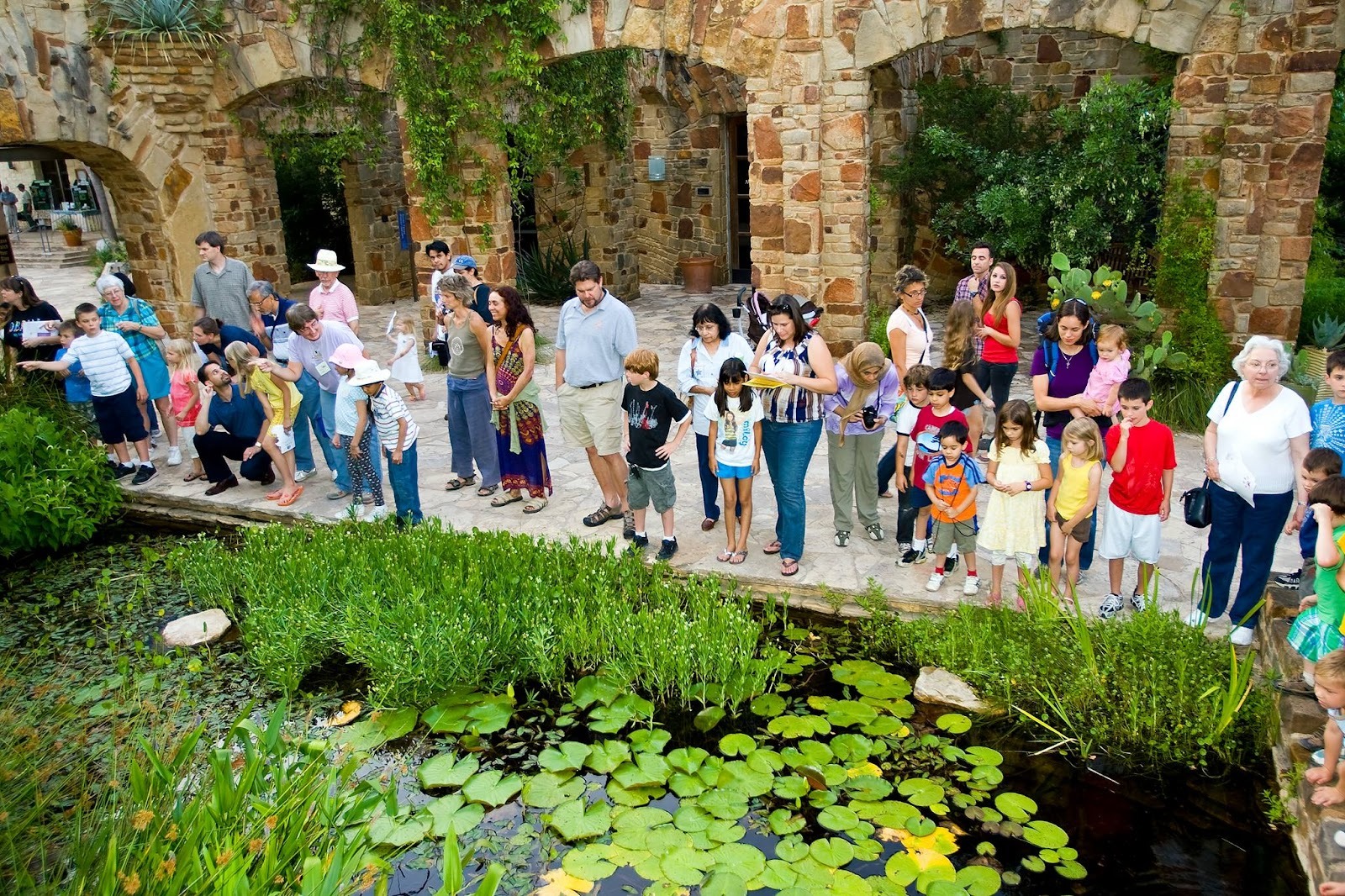
Wetland Pond Gathering. (Photo: Courtesy of The Wildflower Center)
A new dashboard feature will also be unveiled that will enable visitors to interact with research data in new ways. While this is designed to serve all website visitors, there will also be special offerings designed for educators to incorporate the information into their curriculum.
“For our fire research, and for our pollinator research, and our seed banking conservation we will have content with videos and audio and interactive data. We're trying to design it with education in mind, by pairing it with curriculum that teachers can just pull. And we're hoping to make it an online experience where people can go to learn about the science that we're doing specifically, but also just about the process of science–collecting the data, analyzing the data,” Griffin said.
“In our conservation, we're always thinking about how to package the story to get people to care about our mission of The Wildflower Center, which is inspiring conservation of native plants.”
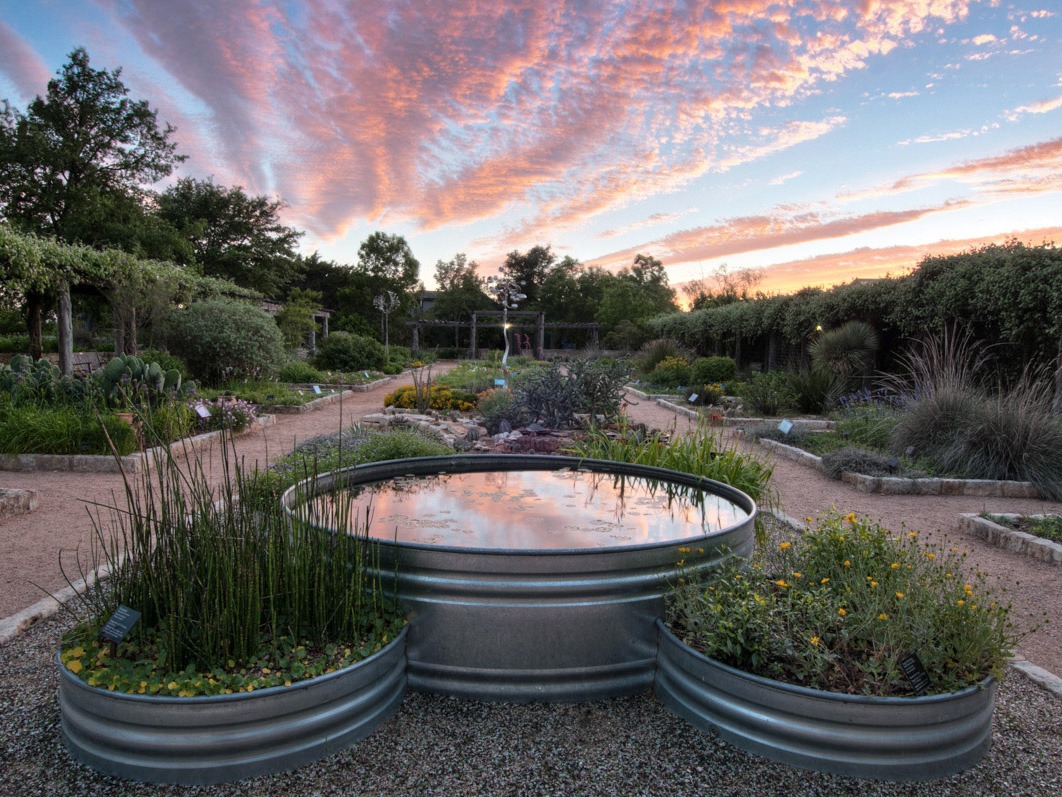
Themed garden on The Wildflower Center campus. (Photo: Courtesy of The Wildflower Center)
While raising awareness and increasing the public’s access to information is imperative for ongoing success, so is continuing to forge and strengthen the connections between the professionals doing this important work.
To this end, The Wildflower Center is now running the Texas Plant Conservation Alliance–an organization whose purpose is to connect people and organizations doing rare plant conservation across the state.
“We want to serve as connectors and leaders in the field of conservation around the state and around the country,” Griffin said.
“Our big goal is just to connect folks, have them communicating about what they're doing, sharing resources, that kind of thing, to really increase the impact and the amount of work that we can do.”
With their continued commitment to conservation and community engagement it's clear that the dedication to their mission is as strong today as when The Lady Bird Johnson Wildflower Center was founded, and is what will keep it blooming well into the future.
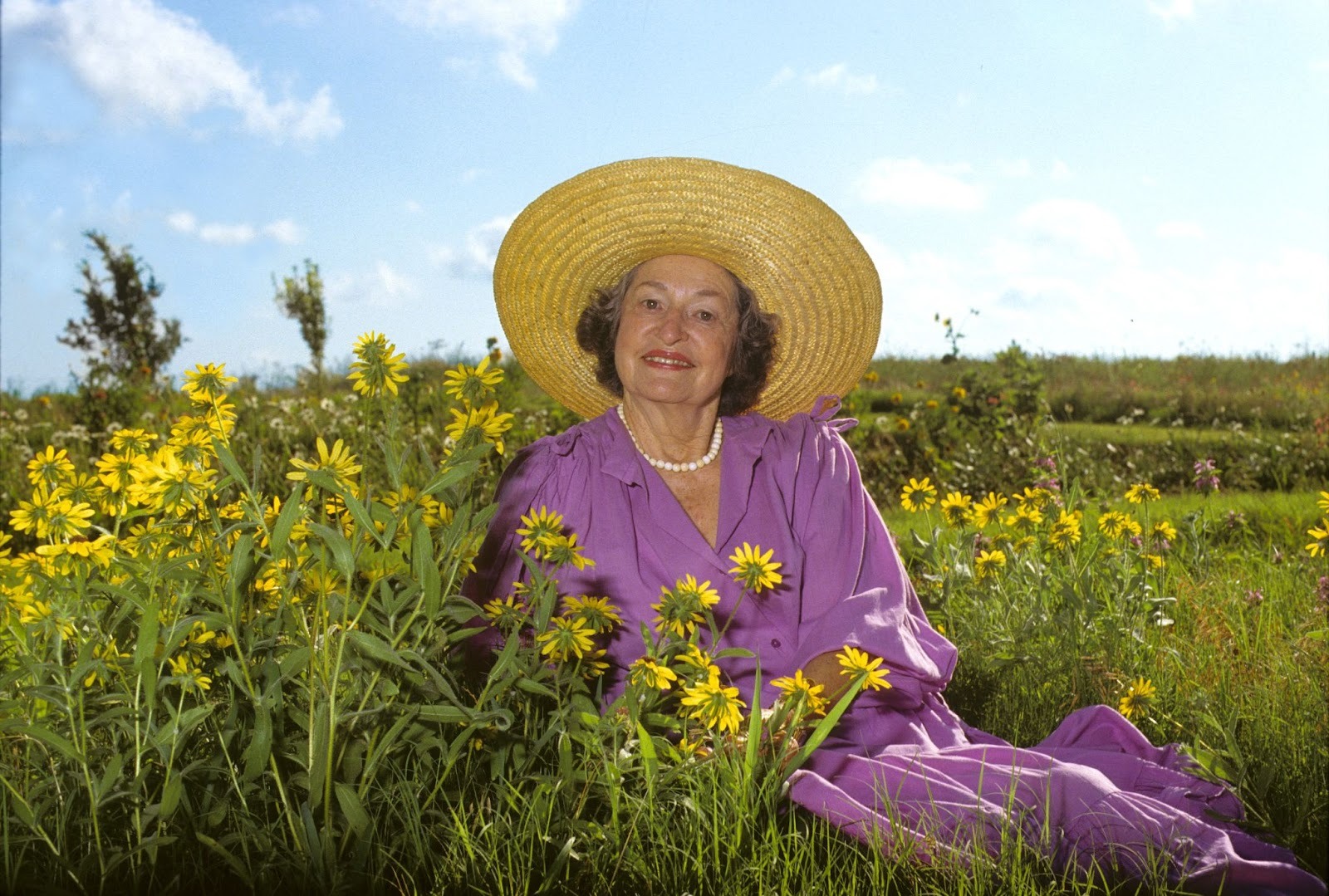
Founder, Lady Bird Johnson. (Photo by John D. Smithers)
